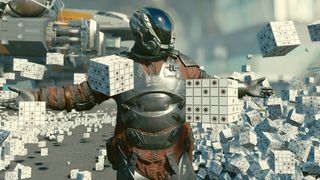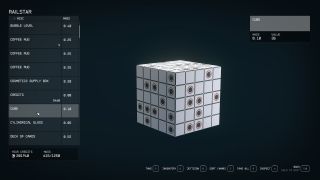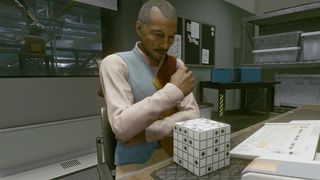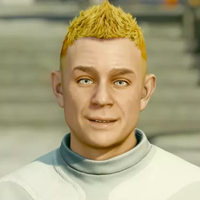Some Starfield players are trying to solve a mysterious puzzle that might not actually be a mysterious puzzle
Is the strange "Cube" with dots on it a puzzle to be solved? Or just a decoration?

Everyone loves a little mystery. Heck, players have been trying to solve a puzzle in Cyberpunk 2077 for almost three years. And now some Starfield sleuths are trying to solve a puzzle in Bethesda's space RPG.
Well, maybe. A strange cube covered in dots found in Starfield vexed one player enough to ask for help determining what it was, and now others are joining in to help solve the mystery… if there is indeed something to be solved.

The investigation kicked off thanks to a desperate cry from Reddit user SomeBlueDude12 titled WHY IS NO ONE TALKING ABOUT THIS HORRIBLE ITEM. WHAT IS IT? They posted a few pictures of the object in question, a cube that is simply called "Cube." It's a decorative piece you can find pretty routinely in apartments and settlements, on desks and counters, and sometimes for sale in shops. The cube has dots on all its sides in various configurations, suggesting it's a puzzle of some sort, perhaps like a Rubik's Cube. However the object itself is just a cube—it can't actually be manipulated by players other than turning it over and looking at its spots.
Which doesn't mean it's not a puzzle, I suppose. The configuration of the dots might have some deeper meaning that, if decoded, could lead players to a location or easter egg or secret within the game.
This potential mystery hasn't exactly set the community on fire, though some players are trying to figure out the cube's significance. Some players are clearly trying harder than others and a few are just having a bit of fun.
Current theories about the cube include that it might possibly be:
- A "locational die" as seen in Stargate, where dots on a cube can show an exact location in 3D space
- A space-age version of the Rubik's cube
- A 3D cube version of the game Lights Out
- A space version of the Dwemer puzzlebox from Arkngthand in Morrowind
- A futuristic new gaming console called—brace yourself—the "GameCube"
- A portrait of Todd Howard's face, if you collect enough and lay them out in a grid like these
- A code revealing "everything" about The Elder Scrolls 6
- A 3D version of Sudoku
- A Weighted Companion Cube
- An item for modders to reskin with pictures of anime catgirls
- The Lament Configuration from Hellraiser
- A heatmap of all deaths in the Cube film series
- A Molyneux cube (let's hope not)
- The Error Cube from Deep Rock Galactic
- Space minesweeper
- A container for a portal to a secret cow level
- A puzzle whose solution will give you coordinates to find Kiss frontman Paul Stanley, The Starchild

Personally I think it's just a decoration, with the grid design possibly meant to suggest that it's a futuristic puzzle game within the lore of Stafield without it actually being a solvable puzzle. I mostly base this on the level of effort I've witnessed in other game-related objects I've come across in Starfield. There's a ping pong table, paddles, and balls, but I can't actually play ping pong with them. There are pool tables but I can't use pool cues to play pool. Picking up a beachball at a resort got me arrested for theft. And there's a casino with video poker machines, but they won't actually let me play video poker.
The biggest gaming news, reviews and hardware deals
Keep up to date with the most important stories and the best deals, as picked by the PC Gamer team.
So, I'm guessing the cube is just that: a decorative cube meant to symbolize an in-game puzzle game, but without any further significance. I'd be happy to be proven wrong, however. A little mystery can go a long way.
Starfield guide: Our hub of advice
Starfield traits: The full list, with our top picks
Starfield companions: All your recruitable crew
Starfield romance options: Space dating
Starfield console commands: Every cheat you need
Starfield mods: Space is your sandbox

Chris started playing PC games in the 1980s, started writing about them in the early 2000s, and (finally) started getting paid to write about them in the late 2000s. Following a few years as a regular freelancer, PC Gamer hired him in 2014, probably so he'd stop emailing them asking for more work. Chris has a love-hate relationship with survival games and an unhealthy fascination with the inner lives of NPCs. He's also a fan of offbeat simulation games, mods, and ignoring storylines in RPGs so he can make up his own.
Most Popular







